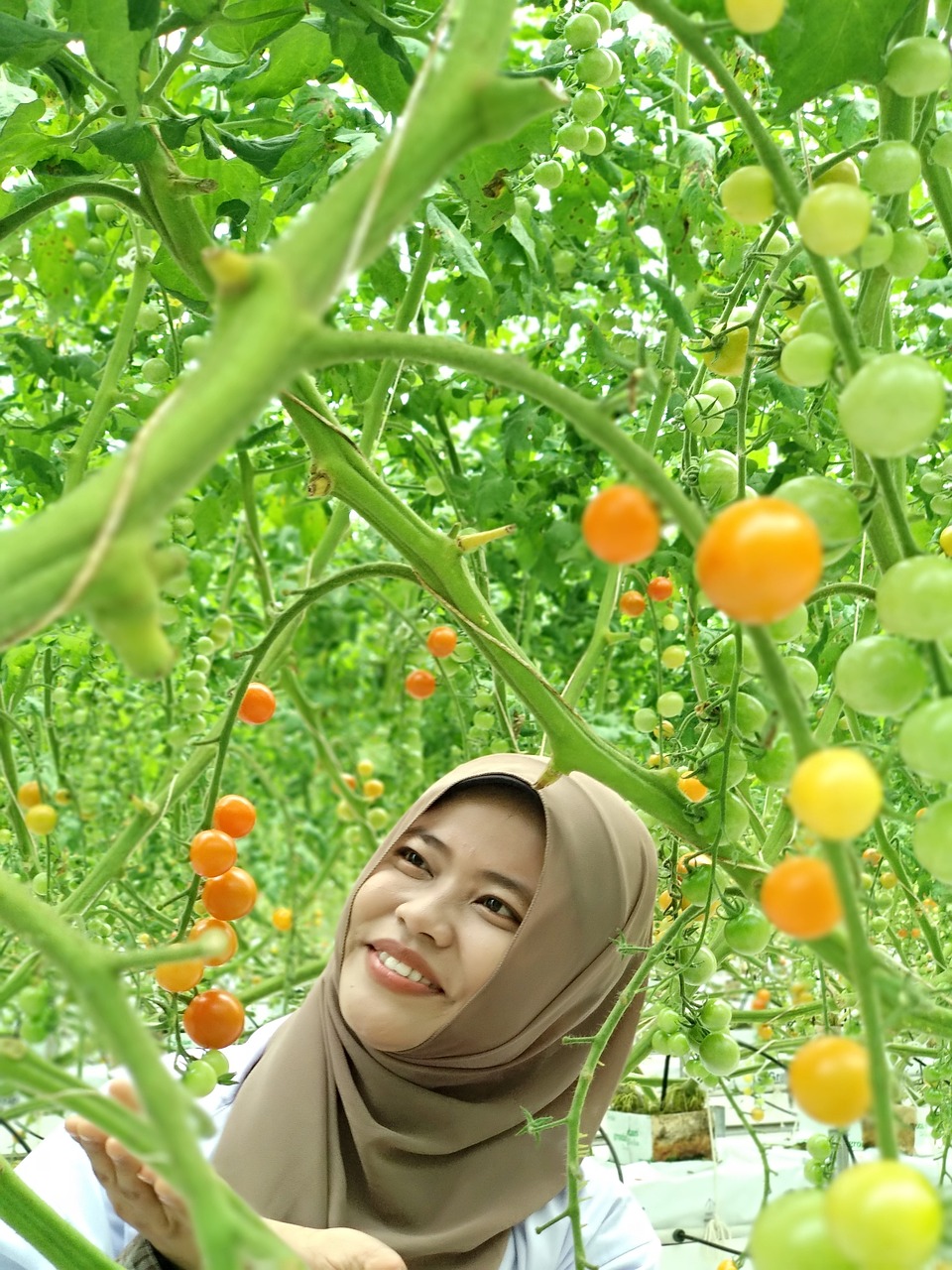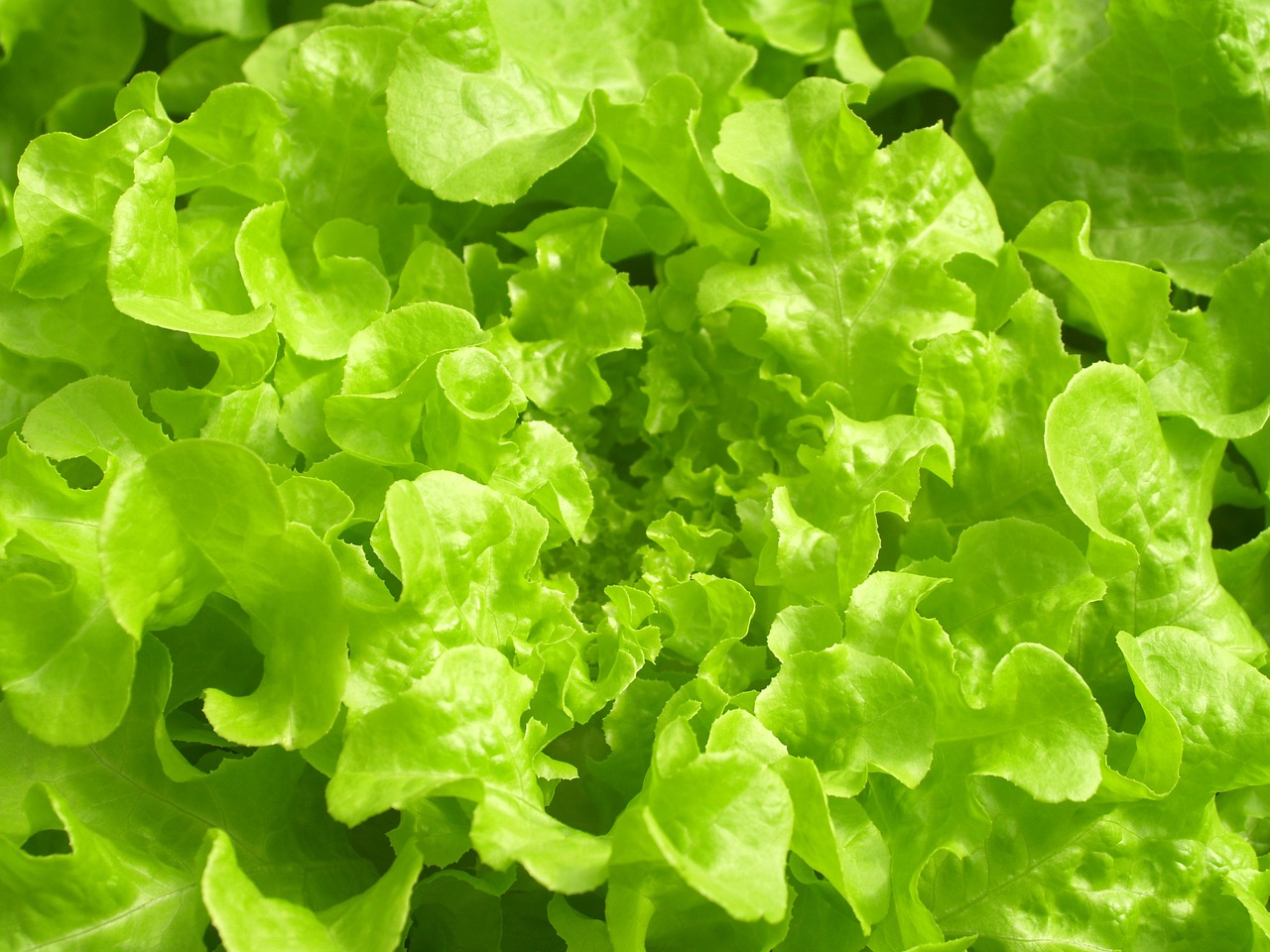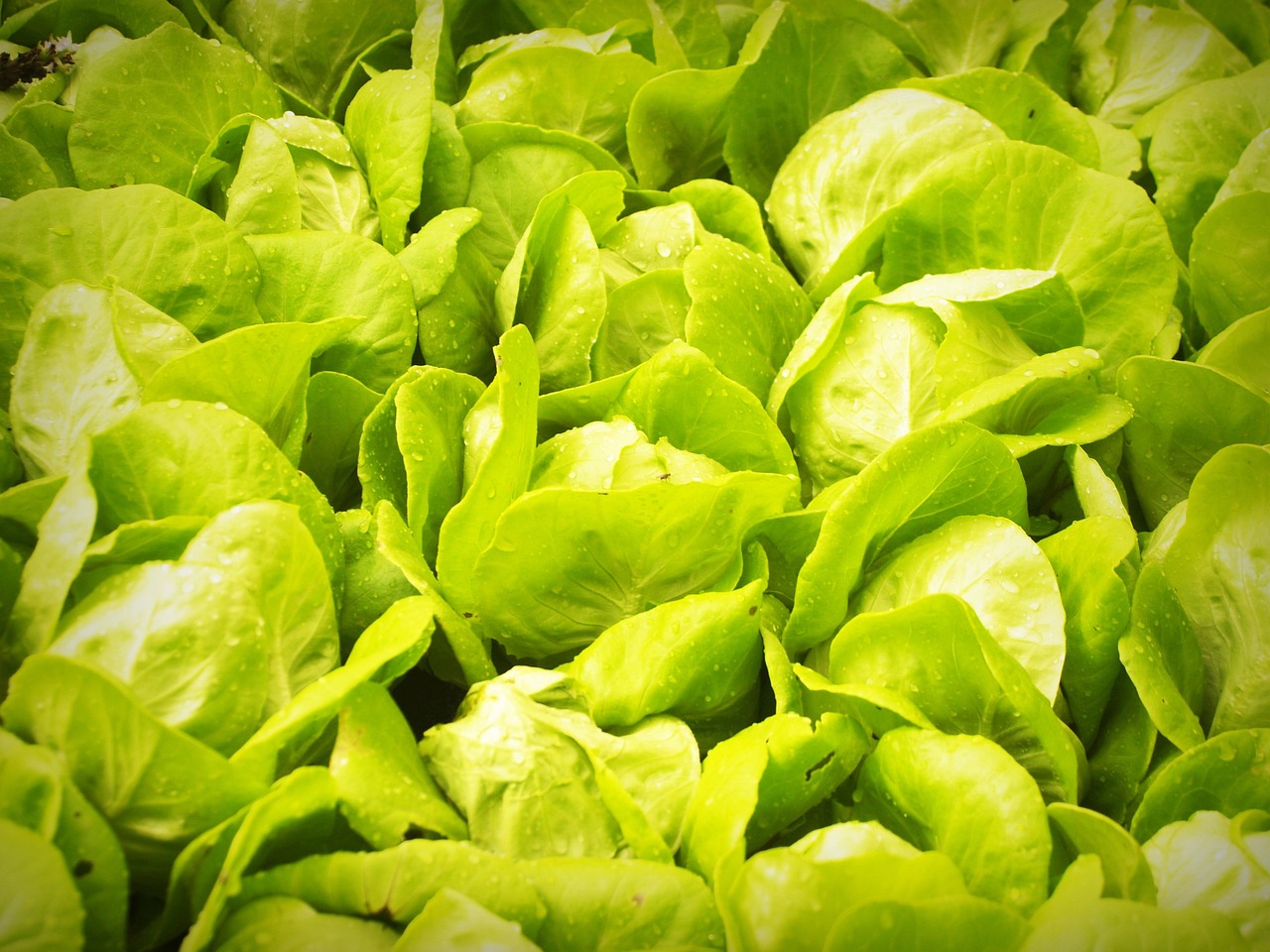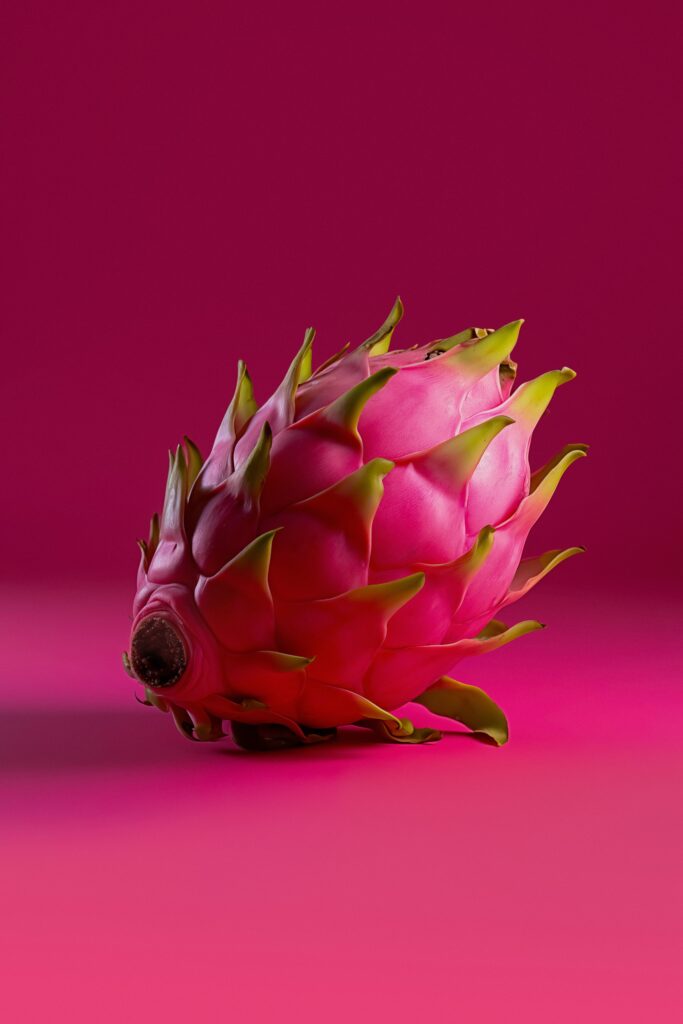If you’ve ever wondered about the best plants to grow hydroponically, you’re in for a treat. This article will help you navigate the vast world of hydroponic gardening, answering your burning question and providing you with valuable insights. From leafy greens to flavorful herbs, we’ll explore the top plant choices that thrive in a water-based nutrient solution. Whether you’re a beginner or a seasoned hydroponic gardener, get ready to discover the perfect plants to add vibrancy and sustainability to your indoor garden.

Leafy Greens
Lettuce
When it comes to growing hydroponically, lettuce is an excellent choice. It is one of the most popular leafy greens because it grows quickly and easily, making it perfect for beginners. The shallow roots of lettuce can extract nutrients from the nutrient-rich water in hydroponic systems efficiently. You can enjoy a variety of lettuce types, including crisphead, butterhead, romaine, and loose-leaf lettuce, all with their unique flavors and textures.
Spinach
Spinach is another fantastic leafy green to grow hydroponically. It is known for its high nutritional value and delicious taste. Hydroponically grown spinach tends to have vibrant green leaves and retains its freshness longer compared to traditionally grown spinach. With its rapid growth and high yields, growing spinach hydroponically allows you to have a constant supply of this nutritious green throughout the year.
Kale
Kale, a nutrient-dense superfood, is a great addition to your hydroponic garden. This leafy green thrives in hydroponic systems, providing you with an abundant harvest. Kale is highly adaptable and grows well in a wide range of temperatures, making it a versatile choice for hydroponic growers. Its rich, dark leaves are packed with vitamins and minerals, making it a nutritious choice for salads, smoothies, or cooked dishes.
Arugula
Arugula, also known as rocket, is a popular choice for hydroponic cultivation. It has a distinctive peppery flavor that adds a delicious kick to various dishes. Arugula grows quickly, allowing you to harvest its tender leaves within a few weeks. This leafy green is a great addition to salads, sandwiches, and even pizzas. With its spicy flavor and fast growth, arugula is a fantastic choice for hydroponic gardening.
Herbs
Basil
Basil is a versatile herb that is commonly grown hydroponically. It has a delightful aroma and adds a burst of flavor to many dishes. Basil thrives in hydroponic systems due to its shallow root system, which can access water and nutrients efficiently. With an array of basil varieties available, such as sweet basil, Thai basil, and lemon basil, you can experiment with different flavors and create delicious pesto, salads, or garnishments for your favorite dishes.
Cilantro
Cilantro, also known as coriander, is a popular herb used in various cuisines worldwide. Growing cilantro hydroponically allows you to have a steady supply of this aromatic herb throughout the year. Cilantro grows quickly and can be harvested when the leaves are young and tender. Its distinct flavor adds depth to salsa, guacamole, and many Asian and Mexican dishes. With hydroponics, you can enjoy fresh and flavorful cilantro without worrying about bolting or pest issues.
Mint
Mint is a refreshing herb that thrives in hydroponic systems. Known for its cool and invigorating flavor, mint is perfect for adding to beverages, desserts, and savory dishes. Hydroponically grown mint tends to have a stronger aroma and flavor compared to traditionally grown mint. With its vigorous growth and ability to grow in various hydroponic setups, growing mint hydroponically ensures a continuous supply of this aromatic herb, transforming your recipes into culinary delights.
Parsley
Parsley is a versatile herb that is an excellent addition to your hydroponic garden. It is packed with vitamins and minerals, making it a nutritious choice for your dishes. With two main types, curly and flat-leaf, parsley offers different flavors and textures to suit your culinary preferences. Hydroponically grown parsley tends to be more vibrant and flavorful compared to soil-grown parsley. It can enhance the taste of soups, sauces, salads, and many other dishes, making it a must-have herb for hydroponic gardening.
Fruiting Plants
Tomatoes
Tomatoes are one of the most popular fruits to grow hydroponically. With a wide variety of tomato cultivars available, you can choose the ones that suit your taste and preferred size. Hydroponically grown tomatoes tend to have sweeter and more flavorful fruits compared to their soil-grown counterparts. Tomatoes are known for their versatility in cooking, from fresh salads to pasta sauces. Growing tomatoes hydroponically allows you to enjoy a bountiful harvest of delicious tomatoes year-round.
Cucumbers
Cucumbers are another excellent choice for hydroponic gardening. They grow rapidly and produce high yields, making them a favorite among many hydroponic growers. Hydroponically grown cucumbers tend to have a crisper texture and a sweeter taste compared to conventionally grown ones. With their refreshing flavor and high water content, cucumbers are perfect for salads, pickling, or adding a refreshing touch to your drinks.
Peppers
Peppers, such as bell peppers and chili peppers, thrive in hydroponic systems. They are known for their vibrant colors, various heat levels, and distinctive flavors. Growing peppers hydroponically allows you to control the heat, sweetness, and crunchiness of the fruits. From mild and sweet bell peppers to fiery chili peppers, you can enjoy a range of flavors and spice levels. Peppers are versatile ingredients, adding depth and complexity to stir-fries, stews, salsas, and many other dishes.
Strawberries
Strawberries are a delightful fruit to grow hydroponically. Their sweet and juicy taste, combined with their vibrant color, makes them a favorite among many gardeners. Hydroponically grown strawberries tend to be larger and have a more intense flavor compared to traditionally grown ones. With their compact size, strawberries are ideal for vertical gardening systems. Enjoy them fresh, use them in desserts or jams, or simply savor their natural sweetness straight from the garden.
Root Vegetables
Carrots
Carrots are one of the root vegetables that can be successfully grown hydroponically. Known for their vibrant colors and sweet flavor, carrots are a nutritious addition to any diet. Growing carrots hydroponically ensures consistent growth, perfect shapes, and freedom from soil-borne pests. With different varieties available, ranging from baby carrots to long varieties, you can choose the ones that suit your preferences. Enjoy them raw, steamed, roasted, or added to soups and stews.
Radishes
Radishes are fast-growing root vegetables that thrive in hydroponic systems. They come in various shapes, sizes, and colors, adding visual appeal to your hydroponic garden. Hydroponically grown radishes have a crisper texture and a more intense flavor compared to their soil-grown counterparts. Their spicy and peppery taste adds a delightful kick to salads, sandwiches, or even as a garnish. With their short growing period, you can enjoy a quick and abundant harvest of radishes throughout the year.
Beets
Beets are a nutritious and versatile root vegetable that can be grown hydroponically with great success. With their earthy and sweet flavor, beets are a delightful addition to any meal. Hydroponically grown beets tend to have a more tender and flavorful texture compared to soil-grown ones. You can harvest beets at various stages, from baby beets with their tender greens to mature beets for roasting or pickling. Embrace the vibrant colors and enrich your salads, smoothies, or side dishes with these nutrient-rich root vegetables.
Turnips
Turnips are root vegetables that are well-suited for hydroponic cultivation. With their crisp texture and slightly spicy flavor, turnips offer a unique addition to your hydroponic garden. Hydroponically grown turnips tend to have more tender roots and greens compared to their traditionally grown counterparts. Enjoy the mild flavor of young turnips in salads or cook mature turnips in soups, stews, or roasted dishes. With their quick growth and ability to adapt well to hydroponic systems, turnips are a great choice for any hydroponic gardener.

Legumes
Green Beans
Green beans, or snap beans, are legumes that can flourish in hydroponic systems. With their crunchy texture and fresh flavor, green beans make a delightful addition to any dish. Hydroponically grown green beans tend to have a sweeter taste and retain their vibrant color even after cooking. Enjoy them steamed, stir-fried, or incorporated into salads or casseroles. Growing green beans hydroponically allows you to enjoy a consistent harvest of tender and delicious beans throughout the growing season.
Peas
Peas are another legume that can thrive in hydroponic environments. With their sweet taste and delicate texture, peas are a popular choice for many hydroponic growers. Hydroponically grown peas tend to produce higher yields and have superior taste compared to traditionally grown ones. From sugar snap peas with their edible pods to English peas that require shelling, there are various pea varieties to suit your preferences. Enjoy them fresh, steamed, or added to stir-fries, soups, or salads.
Lentils
Lentils are protein-rich legumes that can be grown hydroponically. They are a staple in many cuisines around the world and offer various colors and flavors. Hydroponically grown lentils tend to have a more vibrant color and retain their shape and texture after cooking. From yellow and red lentils to French green and black beluga lentils, you can experiment with different lentil varieties and create hearty soups, stews, salads, or Indian dal dishes.
Soybeans
Soybeans, also known as edamame, are versatile legumes that can be grown successfully in hydroponic systems. They are high in protein, making them a nutritious addition to your diet. Soybeans require a bit more attention and care in hydroponics due to their longer growth period and specific temperature requirements. However, the reward is worth it, as freshly harvested edamame pods can be enjoyed steamed and sprinkled with salt for a healthy and flavorful snack.
Microgreens
Broccoli
Broccoli microgreens are packed with vitamins, minerals, and antioxidants, making them a fantastic addition to your hydroponic garden. These tiny greens are harvested at an early stage, just as their first true leaves develop. Hydroponically grown broccoli microgreens tend to have a stronger flavor and more nutrient-dense composition compared to their mature counterparts. Add them to salads, sandwiches, or use them as a garnish to elevate the nutritional value and visual appeal of your dishes.
Radish
Radish microgreens are an excellent choice for hydroponic cultivation, as they grow quickly and are packed with flavor. These microgreens have a distinct spicy and peppery taste, adding a wonderful kick to your dishes. Hydroponically grown radish microgreens tend to have a more intense flavor and a vibrant color compared to traditionally grown ones. Use them as a topping for salads, sandwiches, or incorporate them into your favorite recipes for a burst of freshness and nutrition.
Sunflower
Sunflower microgreens are not only visually appealing but also highly nutritious. They have a slightly nutty and crunchy texture, making them a delightful addition to various dishes. Hydroponically grown sunflower microgreens tend to be more tender and flavorful compared to their soil-grown counterparts. Sprinkle them on salads, add them to wraps or sandwiches, or use them to garnish soups or stir-fries. These microgreens are not only delicious but also provide a good source of vitamins, minerals, and healthy fats.
Pea Shoots
Pea shoots are tender and delicate microgreens that are harvested just after they develop their first leaves. They have a subtle sweetness and a pleasant crunch, making them a versatile addition to your hydroponic garden. Hydroponically grown pea shoots tend to have a more vibrant color and a sweeter flavor compared to traditionally grown ones. Use them in salads, stir-fries, omelets, or as a topping for various dishes. These microgreens add a burst of freshness and nutrients to your culinary creations.

Edible Flowers
Nasturtium
Nasturtium flowers are not only beautiful but also edible and easy to grow hydroponically. They come in vibrant colors and have a peppery flavor that adds a unique twist to your dishes. Hydroponically grown nasturtium flowers tend to have a more intense flavor and a longer blooming period compared to traditionally grown ones. Use them as a decorative element in salads, blend them into spreads or sauces, or stuff them for an elegant appetizer. Nasturtium flowers are sure to impress and delight your taste buds.
Calendula
Calendula, also known as pot marigold, is a popular edible flower that can be grown hydroponically. Its vibrant orange and yellow petals not only add a visual appeal to your garden but also a mild tangy flavor to your dishes. Hydroponically grown calendula flowers tend to have a more pronounced taste and a longer blooming period compared to traditionally grown ones. Use them as a colorful addition to salads, soups, or desserts, or infuse them into oils or vinegars for a unique culinary experience.
Viola
Viola flowers, also known as pansies, are delicate, colorful blooms that are edible and perfect for hydroponic cultivation. They come in a wide range of colors, allowing you to add visual interest to your garden and dishes. Hydroponically grown viola flowers tend to have a more vibrant color and a longer blooming period compared to traditionally grown ones. Use them as a decorative element in salads, freeze them into ice cubes for fancy drinks, or crystallize them for beautiful cake decorations. These edible flowers will surely impress your guests.
Chamomile
Chamomile flowers are not only used to make soothing tea but are also delightful edible flowers for hydroponic gardens. They have a delicate, floral flavor with hints of sweetness, making them a perfect addition to desserts and infusions. Hydroponically grown chamomile flowers tend to have a more robust flavor and a longer blooming period compared to traditionally grown ones. Use them to flavor baked goods, sprinkle them in salads, infuse them into syrups or cocktails, or simply enjoy a calming cup of chamomile tea.
Vine Crops
Watermelon
Watermelons, with their sweet and juicy flesh, can be successfully grown hydroponically. Although they require larger growing spaces, the payoff is worth it when you taste the fresh, sun-ripened fruits. Hydroponically grown watermelons tend to have a higher sugar content and a more intense flavor compared to traditionally grown ones. Enjoy slices of watermelon as a refreshing snack, blend them into smoothies, or make refreshing agua frescas. Growing watermelons hydroponically allows you to enjoy these summertime favorites even if you have limited garden space.
Melons
Melons, such as cantaloupes and honeydews, can be grown hydroponically and offer a sweet and juicy treat. They thrive in hydroponic systems, as the controlled environment allows for optimal growth and consistent flavors. Hydroponically grown melons tend to have a more intense flavor and a crisp texture compared to their traditionally grown counterparts. Indulge in slices of chilled melons, use them in fruit salads or smoothies, or get creative with desserts and cocktails. Experience the taste of summer all year round by growing melons hydroponically.
Gourds
Gourds, such as bottle gourds or luffa gourds, can be grown hydroponically for their unique shapes and uses. Bottle gourds can be harvested young and used for culinary purposes, while mature ones are often dried and used as containers or musical instruments. Luffa gourds, on the other hand, can be grown for their fibrous interior, which is commonly used as a natural bath sponge. Hydroponic cultivation allows you to grow gourds with optimal nutrients and support, resulting in healthy and productive plants.
Squash
Squash, including zucchini and yellow summer squash, can thrive in hydroponic systems. These versatile vegetables offer a range of shapes, sizes, and flavors, making them a popular choice for hydroponic growers. Hydroponically grown squash tends to have a more pronounced taste and vibrant colors compared to traditionally grown ones. Use them in stir-fries, grill them alongside other vegetables, or stuff them with your favorite fillings. With hydroponics, you can enjoy a successful harvest of squash and explore their culinary potential.
Berries
Blueberries
Blueberries are small, flavorful fruits that can be grown hydroponically. With their high nutritional value and antioxidant properties, blueberries are a nutritious addition to your hydroponic garden. They require slightly acidic conditions to thrive, making hydroponic systems an ideal growing environment. Hydroponically grown blueberries tend to have a more intense flavor and retain their firmness compared to traditionally grown ones. Enjoy these superfruits fresh, add them to smoothies, or use them in various desserts to elevate the taste and nutritional profile of your dishes.
Blackberries
Blackberries are another delicious berry that can be successfully grown hydroponically. Known for their sweet and tart flavor, blackberries are a favorite among many fruit lovers. Hydroponically grown blackberries tend to have larger and juicier fruits compared to their traditionally grown counterparts. Enjoy these succulent berries fresh, use them in jams or pies, or add them to your breakfast bowl for a burst of flavor and antioxidants.
Raspberries
Raspberries are delicate and flavorful berries that can thrive in hydroponic systems. With their sweet and tangy taste, raspberries are a delightful addition to any dish. Hydroponically grown raspberries tend to have a more intense flavor and a longer shelf life compared to traditionally grown ones. Enjoy them fresh, use them in desserts or sauces, or freeze them for long-term storage. Growing raspberries hydroponically allows you to savor these delectable berries year-round.
Gooseberries
Gooseberries are unique and tangy berries that can be grown hydroponically. With their vibrant colors and distinctive flavor, gooseberries are a versatile ingredient in both sweet and savory dishes. Hydroponically grown gooseberries tend to have a more robust flavor and a longer shelf life compared to traditionally grown ones. Use them in pies, jams, or chutneys, or add them to salads or savory sauces for a touch of tartness. These berries will surely elevate your culinary creations and surprise your taste buds.
Exotic Plants
Wasabi
Wasabi, known for its pungent and spicy flavor, can be grown hydroponically, allowing you to enjoy the true essence of this exotic plant. Hydroponically grown wasabi tends to have a stronger and more authentic taste compared to traditionally grown ones. Its iconic green paste adds a distinctive kick to sushi, sashimi, and many other dishes. Growing wasabi hydroponically ensures the ideal conditions for this delicate plant, allowing for a continuous supply of fresh wasabi throughout the year.
Dragon Fruit
Dragon fruit, with its striking appearance and sweet taste, can be successfully grown hydroponically. The vibrant pink or white flesh of dragon fruit is not only visually appealing but also a delicious treat. Hydroponically grown dragon fruit tend to have a more intense flavor and a longer shelf life compared to traditionally grown ones. Enjoy the juicy fruit on its own, add it to smoothies, or use it in desserts for a burst of tropical sweetness. Growing dragon fruit hydroponically allows you to experience the wonders of this exotic fruit regardless of your climate.
Passion Fruit
Passion fruit, with its aromatic flavor and tartness, can thrive in hydroponic systems. Known for its wrinkled, purple or yellow skin and juicy interior, passion fruit adds a tropical twist to your dishes. Hydroponically grown passion fruit tends to have a more intense flavor and a longer shelf life compared to traditionally grown ones. Savor the fruit on its own, use it as a topping for desserts or yogurt, or create refreshing beverages. Growing passion fruit hydroponically allows you to enjoy these exotic fruits and explore their culinary versatility.
Kaffir Lime
Kaffir lime, with its distinct fragrance and tangy flavor, can be grown hydroponically, allowing you to enjoy its unique qualities year-round. This citrus fruit is known for its knobby appearance and double-lobed leaves, which are used in various Asian dishes. Hydroponically grown kaffir lime tends to have a more pronounced flavor and aroma compared to traditionally grown ones. Use the leaves to infuse flavor into curries, soups, or beverages, or zest the fruit for a burst of citrusy goodness. Growing kaffir lime hydroponically ensures a continuous supply of this fragrant fruit and its versatile leaves for your culinary adventures.
In conclusion, there is a wide range of plants that can be successfully grown hydroponically. From leafy greens like lettuce, spinach, and kale to herbs like basil, cilantro, and mint, you can create a thriving hydroponic garden filled with fresh flavors and abundant harvests. Fruiting plants such as tomatoes, cucumbers, peppers, and strawberries add color and sweetness to your garden. Root vegetables like carrots, radishes, beets, and turnips offer nutritional diversity, while legumes like green beans, peas, lentils, and soybeans provide a protein-rich addition to your hydroponic diet. Microgreens, edible flowers, vine crops, berries, and exotic plants all contribute unique flavors and nutritional benefits to your hydroponic gardening experience.
By exploring these various plant options and learning the specific growing requirements for each, you can cultivate a thriving and diverse hydroponic garden. Whether you are a seasoned hydroponic gardener or just starting your journey, the possibilities are endless. Enjoy the rewards of growing your own fresh and nutritious produce, experiment with different flavors and culinary creations, and embrace the joy of hydroponic gardening. Happy growing!





